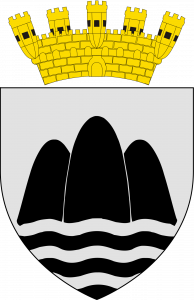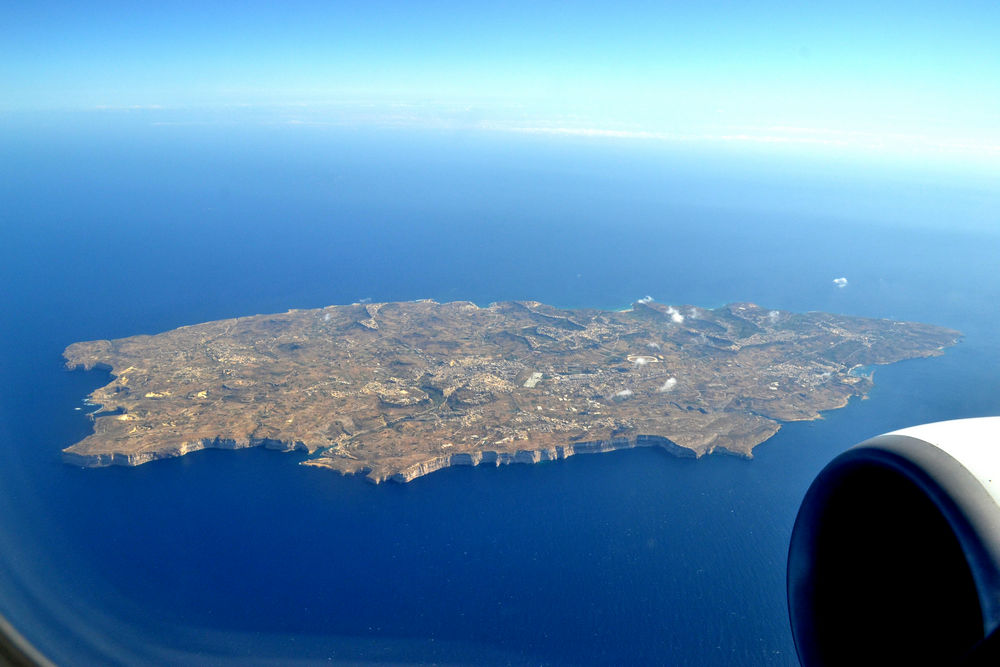Motto
Fertilis ab undis caput effero.
Għammiela ngħolli rasi mill-ilmijiet.
A fruitful land raising its head from the sea.

The coat-of-arms of Gozo – Għawdex, referred to as the island of Three Hills, are Party per fess, Sable three hills in fess Argent, the centre on enhanced and barry wavy six Argent and Sable; ensigned with a moral crown with five eschaugettes and a sally port Or.
It depicts a field divided horizontally: the upper two-thirds silver; the lower one third made up of six parallel wavy horizontal bands alternately silver and black, the top silver, the bottom black. Upon the upper part, three slightly pointed hills in black, the centre hill higher and in front of the two hills. Above the shield is amural coronet with five eschaugettes and a sally-port in gold. This coat-of-arms originated from that of the Universitas – the regional government of Gozo (1350-1819) – and was first used in the late sixteenth century.
The Official recognition of the Coat-of-Arms of Gozo was published in the Malta Government Gazzette dated 7th October 2014, B 4434 – Maltese Version and B 4440 – English Version.

The Gozo Regional Council
The Regional Councils, which were formerly called Regional Committees, were established by Legal Notice No: 320 of 2011 dated 5th August 2011. The Regional Council is another level of Local Government established by Legal Notice No: 87 of 2019. The Regional Level of Government is relatively young as a system of governance in Malta and Gozo. In fact, as of January 2022, Malta became sub-divided into six regions – Gozo, Tramuntana, Punent, Lvant, Xlokk, and Port. These Regional Councils were established and set-up through the amendment of the Local Councils Act in 2019. The Gozo Regional Council is one of the Six Regional Councils representing all the Regions of Malta and Gozo.
The functions and operation of the Regional Councils are established by law to administer Public functions and are established by the Ministry for the National Heritage, Arts and Local Government (MHAL), in the form of regulations following consultation with the Local Councils Association (LCA). Each region therefore has a Regional Council, which consists of a Regional President, a Deputy President, an Executive Secretary and between 10 and 13 members.
The Gozo Regional Council is constituted of all the Local Councils of Gozo:
Ir-Rabat (Città Victoria), Il-Fontana, Għajnsielem, L-Għarb, L-Għasri, Ta’ Kerċem, Il-Munxar, In-Nadur, Il-Qala, San Lawrenz, Ta’ Sannat, Ix-Xagħra, Ix-Xewkija and Iż-Żebbuġ.
The President of the Region manages all the functions delegated to the Regional Council. The President of the Gozo Region is Dr. Samuel Azzopardi. He has occupied this position since the establishment of the Regional Council in 2011.
The other members of the Gozo Regional Council are the Mayors of each and every locality in Gozo:
-
· Mr. Josef Schembri – Citta` Victoria Local Council,
· Mr. Saviour Borg – Il-Fontana Local Council,
· Mr. Kevin Cauchi – Għajnsielem Local Council,
· Mr. David Apap Agius – L-Għarb Local Council,
· Dr. Daniel Attard – L-Għasri Local Council,
· Mr. Mario Azzopardi – Ta’ Kerċem Local Council,
· Mr. Damien Spiteri – Il-Munxar Local Council,
· Mr. Edward Said – In-Nadur Local Council,
· Mr. Paul Buttigieg – Il-Qala Local Council,
· Mr. Noel Formosa – San Lawrenz Local Council,
· Mr. Philip Vella –Ta’ Sannat Local Council,
· Mr. Aaron Agius. – Ix-Xagħra Local Council,
· Mr. Hubert Saliba – Ix-Xewkija Local Council,
· Dr. Marlene Cini – Iż-Żebbuġ Local Council.
The Offices of the Gozo Region are situated at The Duke Business Centre, 10th June 1887 Street – Victoria Gozo. The Administration of each Regional Council is entrusted to all the representative members representing each and every locality within the respective Region. Regionality is built on the concept of solidarity and collaboration existing between the Local Councils within a particular geographical area. The functions and operation of the Regional Council are established by law to administer Public functions.
In January 2018 the Gozo Region established the Gozo Regional Development Foundation with the aim of setting up the Gozo Development Agency to promote community development and implement projects related to the sustainable and territorial development of the island of Gozo. In particular, it will seek to identify, design and manage suitable local, national, European or international projects which would be beneficial to the island and its community.
Historical Note
Gozo is the second largest island of the Maltese archipelago. The archipelago is made up of three islands denominated in the Maltese language, from the northwest to the southeast, as Għawdex, Kemmuna, and Malta and, in English, as Gozo, Comino, and Malta. Gozo is situated some 6 km northwest of Malta, 80 km south of the nearest landfall in Sicily and 298 km north off the African coast. Gibraltar is 1836 km to the west and Alexandria, Egypt, 1519 km to the east. Gozo is 14.5 km long and 7.25 km at its widest, while Comino is 2.75 km by 2.25 km. Comino lies almost midway in the Gozo-Malta channel and forms part of the Gozo Region. Gozo, has an area of 67 sq km. Its population has risen to over 30,000, a fifth of whom lives in the city of Victoria,the Capital City of Gozo, that embraces the Ċittadella and the old medieval town of Ir-Rabat.
The first humans to reach Gozo arrived from nearby Sicily around seven thousand years ago (5000 BCE) ushering in the Neolithic Period. A new culture led to the beginning of the Temple Period around 4100 BCE, an epoch parallel to the Copper Age in the prehistoric sequence of nearby Sicily. The Temple people disappeared mysteriously around 2500 BCE and the island was then taken over by a people of a different culture, marking the beginning of the third and last period of the prehistoric era known as the bronze age.
Around 700 BCE, the Phoenicians, attracted by the local natural harbours, established a colony on the island. From around 550 BCE, Gozo had passed under the influence of the Carthaginians. In 218 BCE, at the beginning of the second Punic War, the Romans took over from the Carthaginians. Gozo became a Municipium with a fully-fledged local government that minted its own coins. The Romans remained masters until the middle of the fifth century. By the year 455, and perhaps even some time before, the islands had passed under the invaders from the North, first the vandals, then the Sciri, and later on the Osthrogoths. In 535, the islands were conquered by the Byzantines.
In 870, the Aghlabid Arabs – the Muslims that had occupied most of the North Africa – besieged and occupied the islands. The name Għawdex introduced by the Sicilian Saracens is almost certainly a rendering in Arabic of the Greek–Byzantine name Gaûdos.
Malta and Gozo passed under the rule of the Kings of Sicily in 1127 and the Vicissitudes of the Maltese archipelago became intertwined with those of the Sicilian Kingdom. Through marriage and manoeuvre, the Normans were succeeded by the Swabians (1194), the Angevins (1266), and the Aragonese (1282).
On 23 March 1530, Charles V, Emperor of the Holy Empire and also King of Sicily and Malta, donated Malta and Gozo to the Sovereign Military Order of Saint John of Jerusalem, eventually known as the Knights of Malta. They ruled the island until 1798.
On 10 June 1798, the French, under Napoleon Bonaparte, expelled the Knights. The French garrison showed little respect towards the people and their religion and, one hundred and forty days later, the Gozitans succeeded to expel the garrison from their island. Gozo enjoyed a spell of autonomy for twenty one months. On 5 September 1800, the British took Malta and Gozo under their protection. They ruled the archipelago for one hundred and sixty-four years.
On 21 September 1964, Malta and Gozo became an independent nation and, on 1st May 2004, members of the European Union.
The Emblem of Gozo consists of three hills, with the centre hill higher and in front of the other two rising out of the sea. The emblem originated in medieval times and is based upon early descriptions of the island in navigational maps. When approached from the north and the north-west, a silhouette of three hills becomes visible on the horizon. This was given an indication that one was approaching Gozo near Malta.
Mgr. Dr. Joseph Bezzina
